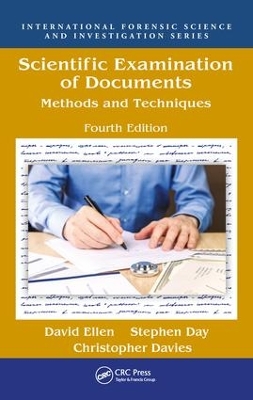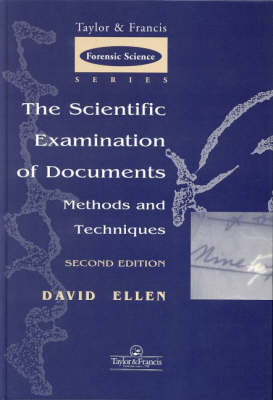International Forensic Science and Investigation
2 total works
Scientific Examination of Documents
by David Ellen, Stephen Day, and Christopher Davies
Revised and expanded to reflect the most recent innovations in the field, The Scientific Examination of Documents, Fourth Edition is a handy, accessible volume detailing current best-practices for forensic document examination.
Since the first edition published in 1989, there have been drastic changes in the field of forensic document examination-both from the use of the analytic techniques available to the professional examiner-and the changes to technology in office and printing equipment and inks. The purpose of analyzing any material used in the production of a questioned document, such as an ink or a piece of paper, is to compare it with another material elsewhere in the questioned document itself-or on another document-to determine whether or not they share a common origin. There may also be a need to provide information for the investigator about the possible origins of the document.
This latest edition reflects the myriad changes and advances that have occurred in the last 10 to 15 years. Topics covered include: current thinking on handwriting interpretation; accidental and deliberate modification of handwriting; the proper collection of samples; a discussion of shredded documents; professional accreditation standards, qualifications, and training; and modern digital imaging and analysis of documents and handwriting utilizing software and imaging, including reconstruction of an image from erasures, obliteration and other document altering methods. A new section addresses cognitive bias and Chapter 8 is completely updated to cover the advances in print and photocopied documents, based on current technology, and analytical developments in the comparison of such documents.
Key features:
- Discusses issues regarding handwritten, photocopied, and printed documents-including inkjet versus digital printing
- Presents the advances and capabilities modern office fax, photocopy, and printing technologies-and implications for document examination
- Details and reinforces the importance of ensuring proper scientific methods during an examination
- Addresses current Raman spectroscopy, UV-VIS, mass spectroscopy, and SEM analysis techniques
- Highlights the importance, and implications, of biological and fingerprint evidence from documents that can be collected, examined, and utilized in a case
The Scientific Examination of Documents, Fourth Edition serves as an invaluable resource to established professionals, those just entering the field, and legal and investigative professionals outside the discipline who have a professional interest dealing with questioned documents in the course of their work.

